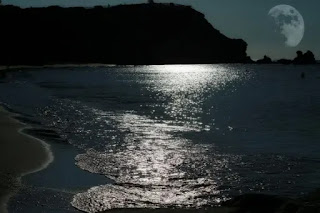All About The Tides And How They Influence Fishing
Everything you need to know about the influence of the tides on your fishing.
 |
| All About The Tides And How They Influence Fishing |
Before understanding the influence of tides on fishing, we need to really understand what tides are.
Tides are the rise and fall of sea level as a result of the gravitational pull of the sun and moon and follow a lunar schedule.
Generally speaking, fishing is usually best when the tide is running, that is, during the mid-tide period, rather than the peak of low or high tide when the water is still. Many species of fish tend to feel more excited when the water is flowing.
However, the active fish in the fishery decreases with a slow or high flow of water. It makes sense to schedule fishing activity at times that coincide with the tides.
Do tides only affect inshore fishing?
No, the tides also affect deep sea fishing, dictating where fish maintain their structure and concentrating food in circular motions of water that lead to a small whirlpool and deeper nutrient-rich water pushed to the surface.
However, the tidal impact is strongest in shallow waters off the beach, bays, estuaries and ports, as well as around islands and reefs that “push” the tide through narrow channels.
How do tides behave?
How high the tides will rise will differ depending on the moon’s position relative to the sun. When both are aligned, we experience great tides.
When they are opposite each other the tidal force is small, since the moon’s orbit brings it closer to Earth every 27.5 days, we experience the highest tides in a month. When the moon is at its furthest point from Earth, the tides are at their lowest.
How do tides influence fish feeding?
The feeding cycle of various fish is directly affected by tidal movements. In most parts of the world, fish that are concentrated in coastal areas feed mainly at high tide, when small organisms are washed away with warm water in winter and cold water in summer.
There are times when fish feed at the beginning of the high tide and at the end of the same tide, this would explain the variation in the diet of fish species from one region to another at different times. What might seem indicative of certain eating habits of fish species in one place may not be the same anywhere else within walking distance.
Tidal flow provides one of the three main things fish need: food. Current sweeps drag small marine animals and plants along with it, concentrating them in tiny eddies where a structure like reefs or rocks interrupts the flow of water.
All types of fish benefit from this, gathering where the food is concentrated. When small fish and smaller organisms are washed away with the rising tide, the larger fish will follow and feed on them, leaving when the food source is complete.
This all explains not only the influence on coastal fishing but also on rivers and mangroves that are influenced by the same tides.
How to know the tide times?
To know when the tides will be moving, you need to consult the tide tables. For this, you can click here and access the NOAA Website and check the tides of your state anywhere in USA. ** .
Final considerations
Now that you understand a little bit about how the tides influence fishing, remember that you will have a much better chance of success in the current tides, whether rising, falling or ebbing. Access the tide table of your fishing spot, gather your gear and good fishing!

